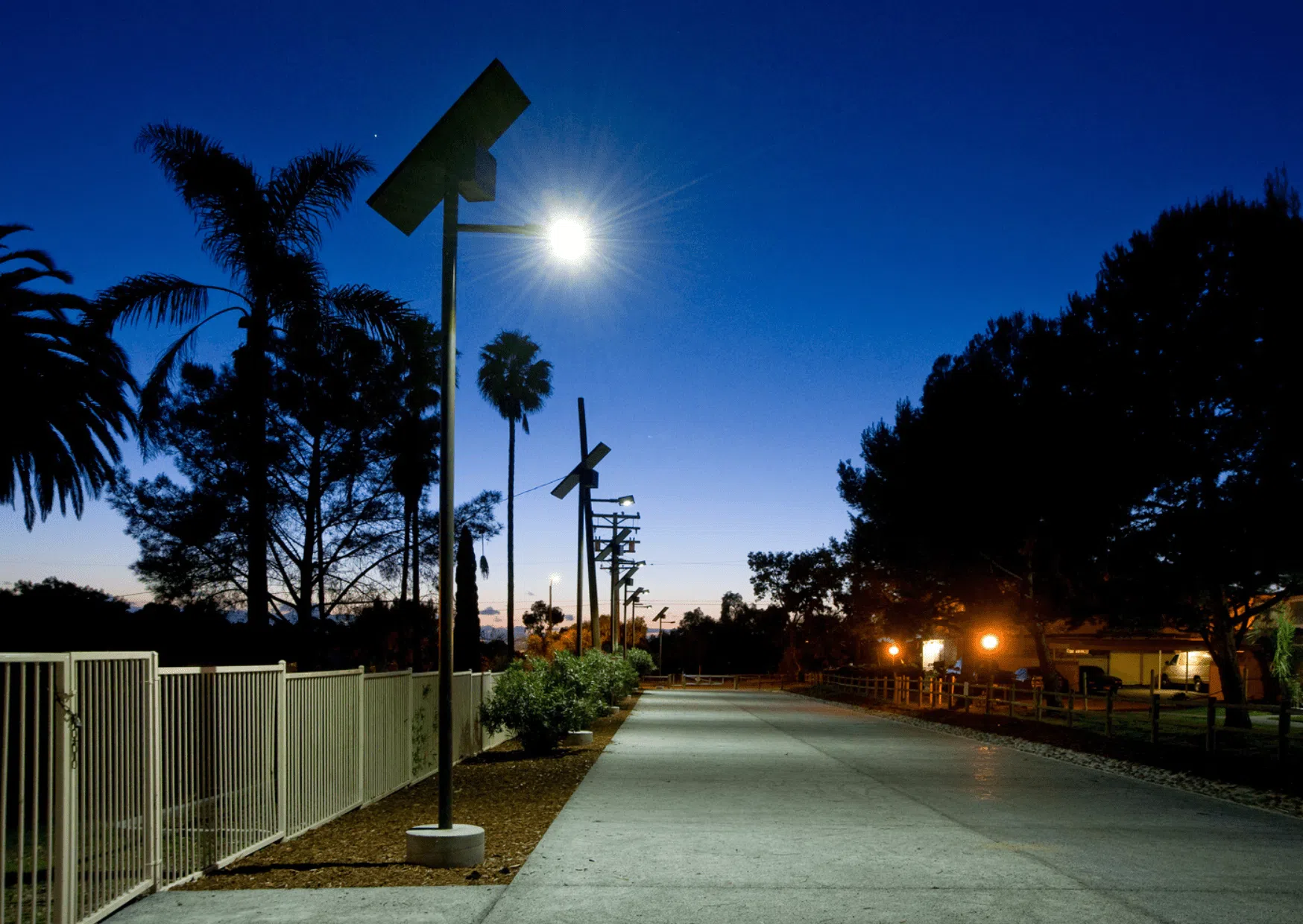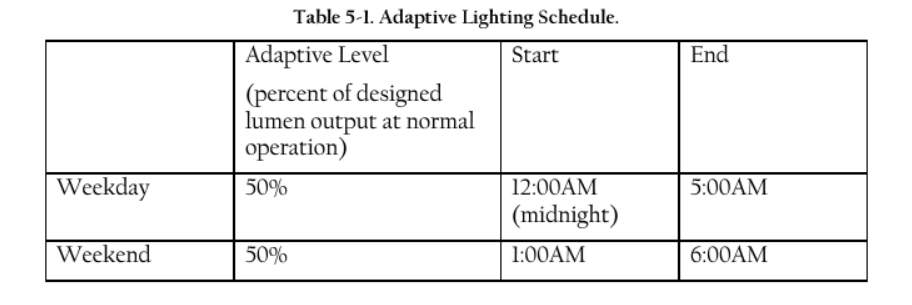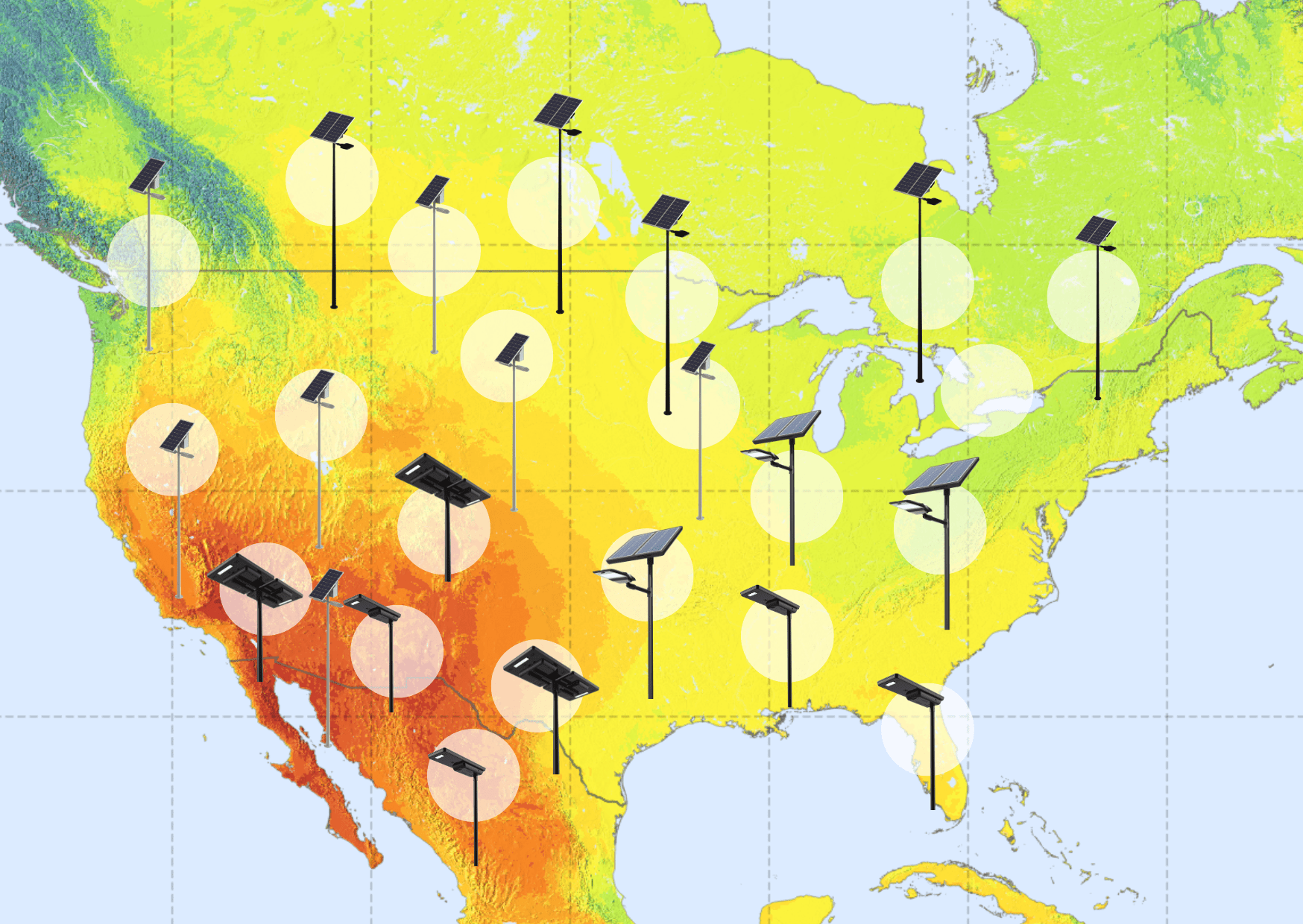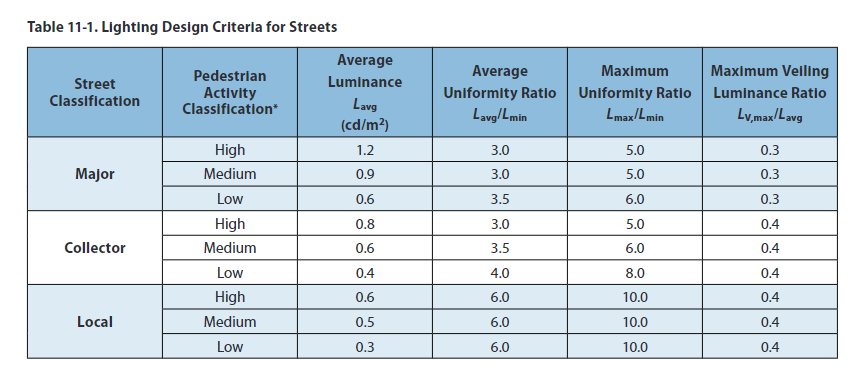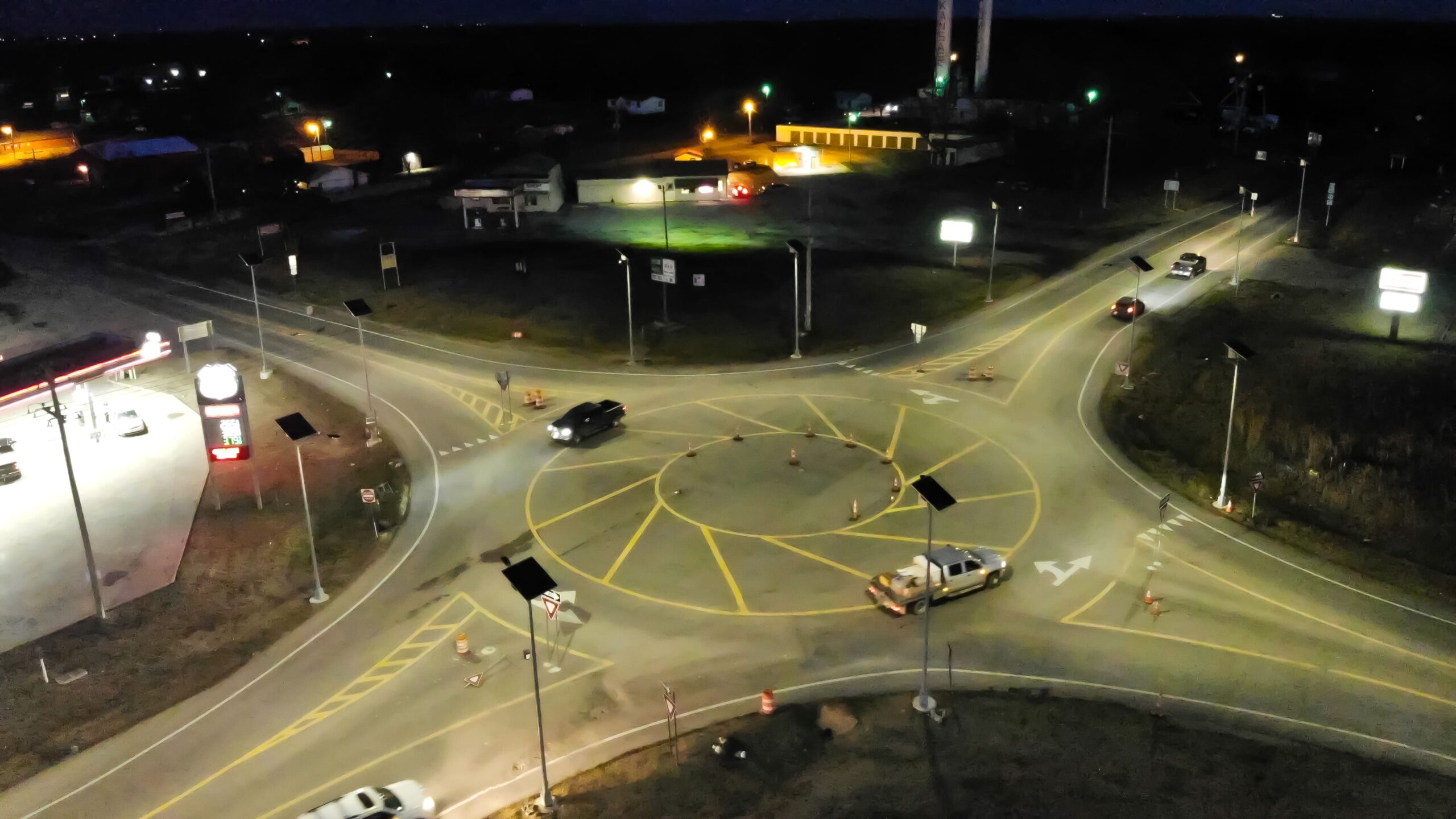The advantages of outdoor lighting when it comes to safety are well-established. On roads, it reduces accidents. In neighborhoods, it deters criminal activities. In parks and other public spaces, it promotes social interaction and recreation, creating secure, usable environments for people to enjoy after dark.  At this point, it’s fairly common knowledge that illuminating an area enhances safety, and few would argue that lighting should be reduced. However, that’s exactly what adaptive lighting encourages us to do: decrease light levels during off-peak hours or, as the FHWA puts it, “use lighting only when necessary and at appropriate levels to ensure safety.† For organizations that associate more light with more safety, this idea might feel unsettling, especially for high-risk areas like roadways. Yet, adaptive lighting isn’t new or extreme, and with the recent updates to guidelines from the Illuminating Engineering Society (ANSI/IES-RP-8-22), there’s stronger support than ever for its implementation and the benefits it offers.    Adaptive lighting is best understood by what it isn’t: static. Unlike a timer, which switches lights on and off at predetermined times every night, or a photocell, which does the same based on ambient light levels, adaptive lighting uses a control system (either centralized or built into each luminaire) to adjust light levels in response to changes in the environment.  These changes can vary widely, from traffic volume to weather conditions to pedestrian usage—all factors that influence the amount of lighting required. For instance, on residential streets, pedestrian numbers typically follow a predictable pattern, peaking in the early evening and tapering off around 10 or 11 p.m. In commercial zones, activity aligns closely with business hours. With adaptive lighting, light can be provided when needed and scaled back when unnecessary.   An example lighting schedule from the City of San Jose’s Streetlight Design Guide. San Jose was one of the first cities in the U.S. to recognize the benefits of adaptive lighting and formalize its adoption.    For agencies relying on traditional AC-powered lighting, the motivation to explore adaptive lighting is clear: reduced energy consumption, less stress on an already taxed grid, and lower utility bills. But there are reasons why we, as a solar lighting manufacturer (whose products are already off-grid and powered for free), are enthusiastic about adaptive lighting too.  Firstly, while we may not need to cut costs due to energy expenses, we’re still keen on minimizing the energy required to power a system. Why? Because a lower energy requirement—we call it a load—enables us to use fewer and smaller solar panels and batteries, reducing both system size and cost. (Smaller systems are lighter and have a lower EPA rating, allowing cheaper poles to be used; batteries and solar panels add weight and expense, so the smaller, the better!)  Reducing system load also means we can extend solar lighting solutions to areas that might have been challenging if constant output was required. For example, a solar streetlight in a place like Kalispell, Montana, might struggle to collect enough energy to provide 12,000 lumens from dusk until dawn during winter. Dimming the light to, say, 50% between midnight and 5 a.m., could make it a viable solution. (We always do the math to ensure our systems are appropriately sized.)   By reducing system load through adaptive lighting, solar lighting can be extended to high-latitude locations that receive less solar radiation.  Lastly, we’d be remiss not to highlight the environmental benefits of adaptive lighting. Lowering a fixture’s output, even for just a few hours, can significantly cut light pollution, which has been shown to confuse, mimic, or mask natural light signals for both animals and humans. Adaptive lighting minimizes the negative impact of light on ecosystems, ensuring illumination that is low-level, controlled, and functional (which coincidentally aligns with three of the IES’ Five Lighting Principles for Responsible Outdoor Lighting).    Having convinced you of the merits of adaptive lighting, let’s refer back to RP-8-22, which provides the most current recommendations for implementing it in the U.S. (Our international readers will note that the Transportation Association of Canada and the Institution of Lighting Professionals in the UK also publish similar guidelines).  RP-8-22 uses two criteria to determine the required lighting level for a street or sidewalk: the street’s classification and the level of pedestrian activity. Classification is based on the number of lanes and traffic volume and is defined by the city (many cities provide maps showing road classifications). Pedestrian activity levels are typically estimates of the number of pedestrians on a single block of sidewalk during the peak nighttime pedestrian conflict hour (some cities have this data, although obtaining accurate pedestrian data remains notoriously difficult).   In the table above, the pedestrian activity classifications are as follows: A volume greater than 100 pedestrians is high, a volume between 10 and 100 is medium, and a volume of 10 or fewer is low.  For adaptive lighting, we’re most interested in instances where pedestrian volumes shift between levels. For example, if pedestrian volumes on a local road dropped from 120 per hour at 6 p.m. to 30 at 10 p.m., the average luminance could be adjusted using RP-8’s recommendations. When pedestrian presence increases in the morning, light levels could be increased again, eventually turning off after sunrise.  A growing number of municipalities and utilities are now adopting these updated RP-8 guidelines for new solar lighting projects, as they address previous liability concerns. (Cities, counties, and utilities have faced lawsuits in the past for failing to provide adequate street lighting, though they are usually found not liable in court.)   While RP-8 recommends considering reducing light levels based on pedestrian activity for local, collector, and major (arterial) streets, as well as sidewalks, walkways, and alleys, it advises against a blanket approach. Scenarios where it should not be implemented include:    Figure 4: Adaptive lighting is not recommended for a number of roadway applications, including roundabouts. For locations requiring dusk-to-dawn operation, Sol’s EverGen lights offer a reliable, durable solar-powered option.  Even if a location is suitable for adaptive lighting, it’s crucial to approach it thoughtfully, taking into account local conditions and user needs. Obtaining reliable pedestrian data can be challenging, and activity patterns can be complex (for instance, the streets around a stadium might be crowded on game nights but deserted on other days, making sweeping changes to light levels unwise and unsafe). As RP-8 explains, “It is the responsibility of the lighting designer to apply sound reasoning and logic when determining pedestrian activity and scheduling light levels.†   For situations where a complete change in lighting schedules isn’t feasible due to unpredictable or unclear pedestrian usage patterns, or where the consequences of insufficient lighting are significant, there’s an alternative: motion detection. Sensors come in various forms—radar, infrared, hybrid—and enable the state of the light to be altered when motion is detected (e.g., turning on a light or changing it from a dimmed to a fully on state).  Motion detection can be beneficial in numerous scenarios, such as parking lots, industrial areas, parks, and campus pathways. According to RP-8, “The police often prefer motion-sensitive lights in alleyways so that activity can be noticed by neighbors or from adjacent streets, as the lights’ activation will signal activity.† Wherever they’re used, motion detectors offer many of the same advantages as adaptive lighting, providing energy (or solar sizing) savings without compromising safety. And if full output is required (say, at a roundabout or multi-use path with high nighttime use), rest assured that Sol’s systems are capable, offering reliable dusk-to-dawn performance wherever needed.    Previously, agencies may have hesitated to reduce lighting for fear of compromising safety. Current IES guidelines, however, allow and even encourage adaptability. Several cities, including San Jose, have already adopted adaptive lighting guidelines, and federal grant programs like Safe Streets and Roads for All have specifically listed it as an eligible use.  This shift towards adaptive lighting is exciting for us in the solar industry because it means we can deliver compact and affordable systems to an even broader range of locations and customers—something we’re eager to do! If you’re interested in learning more about adaptive lighting or think your project could benefit from it, don’t hesitate to reach out.  Powder Calcium Zinc Stabilizer Powder Calcium Zinc Stabilizer,Calcium Zinc Heat Stabilizer,Calcium Zinc Stabilizer,Calcium Zinc Powder Stabilizer Jiangsu Greya New Material Technology Co., Ltd. , https://www.greyastabilizer.comWhat is adaptive lighting?
Why adapt?
Where and how to implement adaptive lighting
Where not to use adaptive lighting
Alternatives to adaptive lighting
Ready to make the switch?
What RP-8-22 says about adaptive lighting—and what it means for solar
Contact Us
